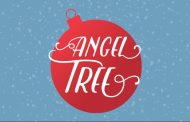Smooth Coat
Dogs with smooth coats have short hair and chill easily in cold weather. You won’t have to spend a lot of time grooming your smooth-coated friend. For the most part, you’ll get by with not much more than brushing him a few times a week. Some groomers divide this type of coat into smooth coat, short coat and combination coat. Smooth coats include boxers, Dobermans and pointers. Labrador retrievers, beagles, and pugs have short coats. Border collies and golden retrievers, with short smooth coats on some parts of the body and longer coats on other parts, sport combination coats.
Here’s a trick I learned from Animal Planet. If you have one of these dogs and they stay inside you are going to have fur everywhere. Once or twice a week take your vacuum cleaner, take the hose off and run it over your dog, This makes the hair that’s already coming out as well as hair that’s just loose out and will cut your shedding problem down and is free to use!!
Medium Coat
Brushing and an occasional trim will keep your medium-coat dog looking good. These dogs do have a bit more hair than their smooth-coated counterparts but are still fairly low-maintenance on the grooming side. Dogs with medium coats are often northern breeds that have relatively short but thick hair. The fur of a medium coat dog is about an inch long. Many of these dogs have double coats with short hair close to the body and a longer exterior coat. This double layer helps protect against cold temperatures. German shepherds and Siberian huskies are two breeds with double coats.
Long Coat
Long-coated dogs often require more grooming than you can do at home. Guardians of dogs with long coats often choose to work with a professional groomer. The long coat category is often broken down into long-parted coat, long-coated small dog and long-coated large dog. The long-parted coat includes Yorkshire terriers and Afghan hounds. Pekingese and Pomeranians are examples of long-coated small dogs; and bearded collies and Old English sheepdogs fall into the long-coated, large dog category.
Wirehair Coat
Like the long-coated dogs, the bristly wirehair coat type requires a good deal of grooming. Wirehair coats must be hand-plucked or stripped on a regular basis to prevent matting, something you will likely prefer to leave to a professional groomer. Affenpinschers and Scottish terriers are examples of dogs with wirehair coats.
Corded Coat
The corded coat, sometimes called wavy coat, includes a wooly undercoat topped by an outer coat that is made up of curls. Poodles and Bichon frises have corded coats. While the corded coat dog does require some grooming, most require less than the long coat or wirehair coat. Most do need to be clipped monthly. Left to grow, many corded coat dogs will develop what looks like long dreadlocks.
Imagine letting your hair grow and not brush it. Imagine washing it and not brushing or drying. Do that for a few months, and you’ve got matted hair. Do that for a year, and we have problems. Yeast will grow under the mats. Your dog will start feeling ill and being less active. The hair left in mats starts pulling out of the skin causing bald spots once the pet is groomed. That pulling is painful and can leave the skin sore, which will make your pet aggressive and agitated. Yes, regular grooming is important. It is for the health of your pet. It is for the happiness of your pet!
Credits to The Nest for their Grooming article. If you have a topic you would like us to write on, please email us at Kuddlesnkisses458@gmail.com or send a message on Facebook “The Kuddles n Kisses Connection.”








